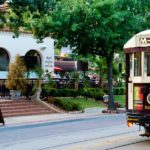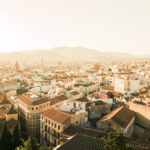Revere remarks around the “wholesale slaughter” of elk he deduced in the bones and horns he observed thrown concerning the landscape from previous years hunts. Livingston (Livingston 1995) reports, “The unhappy elk already were dwindling in figures, and based on a free account related by Rafael Garcia, the surviving herds swam across Tomales Bay towards the backwoods of Sonoma County between the late 1850’s or early 1860’s.” Rafael Garcia would be a veteran from the Mexican army who owned the Rancho Tomales y Baulines.
Completely eliminated from Marin County through the 1860, the nation’s Park Service in cooperation using the California Department of Fish & Game reintroduced eleven tule elk to Tomales Reason For 1978. Two bulls and eight cows were introduced to suggest Reyes from San Luis Island Wildlife Refuge near Los Banos, California. By 1995, the population had grown to in excess of 500 individuals (Dobrenz and Beetle 1966).The Point Reyes herd has become among the largest populations in California with more than 400 counted throughout the 2009 census (Park Service 2009).
Introduction of Exotic Plants
The conversion of California’s grasslands to non-native grasslands started with European contact. European visitors and settlers introduced plants both intentionally and accidentally. Adobe bricks in the earliest servings of California’s missions (1791-1800s) contained remains of common barley (Hordeum vulgare), Italian ryegrass (Lolium multiflorum), redstem filaree (Erodium cicutarium), wild oat (Avena fatua), spiny sowthistle (Sonchus asper), curly pier (Rumex crispus), wild lettuce (Lactuca sp., wild mustard (Brassica sp.) yet others (Hendry 1931).
The majority of the nonnative and invasive plants in California originated in the med region of Eurasia and North Africa. Exotic Mediterranean annual plants altered California’s native grasslands to this kind of extent that it’s been known as “the most spectacular biological invasion worldwide” (Kotanen 2004).
The appearance and introduction of exotic plant species with established populations which are considered naturalized in California could be split into five periods of multinational and modes of entry (Bossard and Randall 2007):
- Spanish colonization era (1769-1825) when more than 16 species created by the settlers and missionaries grew to become naturalized in California
- Mexican Period (1825-1848) when 63 alien plant species were introduced and naturalized because of buying and selling systems between old Spanish settlements in Mexico and native California peoples
- Gold Hurry Period (1849-1860) when 55 plant species were showed up with imported supplies
- Farming Diversification and Development Period (1860-1925) when 158 now naturalized plant species were introduced using the importation of farming supplies, domestic creatures and seeds
- Population Explosion Era (1925-2002) where 654 species grew to become naturalized in California because of ongoing accidental and purposeful introductions associated intense urbanization and suburbanization.

Annual plant invaders have experienced a far more hard time rivaling the perennial grasses in seaside grasslands compared to inland grasslands (Corbin and D’Antonio 2004). Perennial grasses in seaside prairies reduced the biomass of exotic annuals and with time decreased areas by which exotic annual seeds could germinate. However, exotic annual grasses have unwanted effects on native perennial grasses whatsoever existence stages leading to reduced quantity of seeds created, less seedlings that survive, reduced vigor of adult plants (Corbin, et al. 2007).
More lately, seaside prairies are now being more and more invaded by introduced perennials for example velvet grass (Holcus lanatus), tall fescue (Festuca arundinacea), and Harding grass (Phalaris aquatica) (D’Antonio, et al. 2007). A number of these invasive perennial grasses were once suggested for forage and range improvement (Johnson and Love 1945).
The Barley Yellow Dwarf Virus, introduced with barley possibly 300 years back might have been a significant component within the conversion of native grasslands to non-native grasslands (Borer, et al. 2007 Malmstrom, et al. 2005). Herpes, spread by aphids, turns leaves yellow or vibrant red and it is most damaging during drought conditions (Stromberg and Kephart n.d.). Plants have contracted herpes produce far less healthy seeds than individuals not have contracted herpes. Some plants, like wild oat (Avena spp.) may host the condition and spread the problem to surrounding plants.
Fire Suppression
Lightening and human-set fire plays a huge role within the upkeep of grasslands and also the structure of plant communities. Although seaside prairie grasslands might have been more hard to burn in lots of areas because they remain eco-friendly for much of the season, there’s evidence that Indians regularly burned in seaside grasslands (Anderson 2005 Bicknell 1992 Bicknell, et al. 1993a Bicknell, et al. 1993b Bicknell, et al. 1993c Dmytryshyn, et al. 1989 Kotzebue 1830 Lewis 1993 Marryat 1855).
Based on Greenlee and Langenheim (1990), the Central Coast California has already established five distinct fire regimes which had profound effects around the plant life:
 Lightning (as much as 11,000 years back) – Lightning ignited fires occur most frequently on hills and forests (Greenlee and Langenheim). The lightning-set fire regime in California’s grasslands is believed at from 1-fifteen years (USDA Forest Service 2005).
Lightning (as much as 11,000 years back) – Lightning ignited fires occur most frequently on hills and forests (Greenlee and Langenheim). The lightning-set fire regime in California’s grasslands is believed at from 1-fifteen years (USDA Forest Service 2005).
 Aboriginal (11,000 BP to 1792) – Humans altered the lightening ignited regime once they showed up around 11,000 years back by growing the fireplace return interval in seaside grasslands. Native people set fires in grasslands to improve the standard and abundance of grassland plants they employed for food and materials and also to attract creatures towards the new growth. Indigenous Peoples elevated the fireplace return interval for an average of each and every 24 months (USDA Forest Service 2005).
Aboriginal (11,000 BP to 1792) – Humans altered the lightening ignited regime once they showed up around 11,000 years back by growing the fireplace return interval in seaside grasslands. Native people set fires in grasslands to improve the standard and abundance of grassland plants they employed for food and materials and also to attract creatures towards the new growth. Indigenous Peoples elevated the fireplace return interval for an average of each and every 24 months (USDA Forest Service 2005).
 Spanish (1792-1848) – The Spanish prohibited Indian burning in grasslands to preserve the land for cattle grazing, but rather burned in chaparral and oak woodlands to improve the prairie for pasture lands. In that time a mix of fire suppression in grasslands, overgrazing, cultivation, and the development of annual grasses most likely altered the fireplace behavior in prairies. Fire suppression started using the Spanish who prohibited Indian burning in grasslands since it interfered using the forage requirements of their domestic cattle.
Spanish (1792-1848) – The Spanish prohibited Indian burning in grasslands to preserve the land for cattle grazing, but rather burned in chaparral and oak woodlands to improve the prairie for pasture lands. In that time a mix of fire suppression in grasslands, overgrazing, cultivation, and the development of annual grasses most likely altered the fireplace behavior in prairies. Fire suppression started using the Spanish who prohibited Indian burning in grasslands since it interfered using the forage requirements of their domestic cattle.
 Anglo (1847-1929) -Throughout the Anglo period, seaside grassland fires were covered up to preserve forage for cattle. However, grassland fires in inland areas elevated both in return interval and intensity since fires were intentionally set to be able to obvious shrubland in support of grassland (Kinney 1996).
Anglo (1847-1929) -Throughout the Anglo period, seaside grassland fires were covered up to preserve forage for cattle. However, grassland fires in inland areas elevated both in return interval and intensity since fires were intentionally set to be able to obvious shrubland in support of grassland (Kinney 1996).
 Recent (1929-1979) –
Recent (1929-1979) –
Today of fireside suppression elevated the fireplace return interval in prairies. Greenlee and Langenheim estimate the mean fire return interval in prairies in recent time is 20-3 decades, up from 1-fifteen years throughout the lightening, aboriginal, and Spanish periods.
further studying
Anderson MK. 2005. Tending nature: native American understanding and the treating of California’s natural sources. Berkeley CA: College of California Press. 526 p.
Craig S, Larson S, George M. 2006. California native grasslands: a historic perspective–helpful information for developing realistic restoration objectives. Grasslands, A Publication from the Native Grass Association XVI(5):7-11. 2012 12 , 12.
Blackburn TC, Anderson K, editors. 1993. Before the Backwoods: ecological management by Native Californians. Menlo Park CA: Ballena Press. 476 p.
USDA Forest Service. 2005. Fire Regime Table. Fire Effects Information System, [Online]. U.S. Department of Agriculture, Forest Service, Rocky Mountain Research Station, Fire Sciences Laboratory (Producer). Utilized 2012 12 , 12.
Greenlee JM, Langenheim JH. 1990. Historic fire regimes as well as their regards to plant life patterns within the Monterey San francisco bay area of California. American Midland Naturalist 124:239-253.
Goodrich J, Lawson C, Lawson VP. 1980. Kashaya Pomo plants. Berkeley CA: Heyday Books.
Kelly I. 1996. Interviews with Tom Cruz and Maria Copa: Isabel Kelly’s ethnographic notes around the Coast Miwok Indians of Marin and Southern Sonoma Counties California. Collier MET, Thalman Senate bill, editors. San Rafael CA: Miwok Archeological Preserve of Marin. 543 p.
Lewis HT. 1993. Patterns of Indian burning in California:ecosystem and ethnohistory. In: Blackburn TC, Anderson MK, editors. Prior to the Backwoods: Ecological Management by Native Californians. Menlo Park, CA: Ballena Press. p 55-116.
Park Service. 2009. Viewing tule elk . Point Reyes National Seashore. Park Service. Department from the Interior. Utilized 2012 12 , 12.
Stewart OC. 2002. Forgotten fires: Native Americans and also the transient backwoods. Lewis HT, Anderson MK, editors. Norman OK: College of Oklahoma Press. 364 p.
Timbrook J. 1990. Ethnobotany of Chumash Indians, California, according to collections by John P. Harrington. Economic Botany 44(2):236-253.
Resourse: http://sonoma.edu/cei/prairie/history/
Westward Expansion: Crash Course US History #24
Video COMMENTS:
Colin Slater: You have died of dysentery.
KasaiKillz: Your brother has gotten a case of corolla , what do you do.\n[1] Leave him to die\n[2] Leave him to die\n[3] Leave him to die
Techon – NBA Videos, Gaming And More!: what game reference is it????
Rainbow Hyphen: Railroads are basically the Mongols of US History.
Jen Omowale: Haha +DataSolo\n
LazerMax2000: Mongoltage
Gareth Alford: America is a Country born of slavery to the African people and the genocide of the Native Americans
Commissar_Dan: "Mayan Inca was way more advanced than any European invaders" \nWell yeah sure before the Renaissance.
Shawn Dodge: If you use closed captioning/subtitles it says SUCK IT STAN SUCK IT after the mystery document even though he didn't actually say that.
Ross DeGuzman: Maybe the mystery document reaction was scripted?







